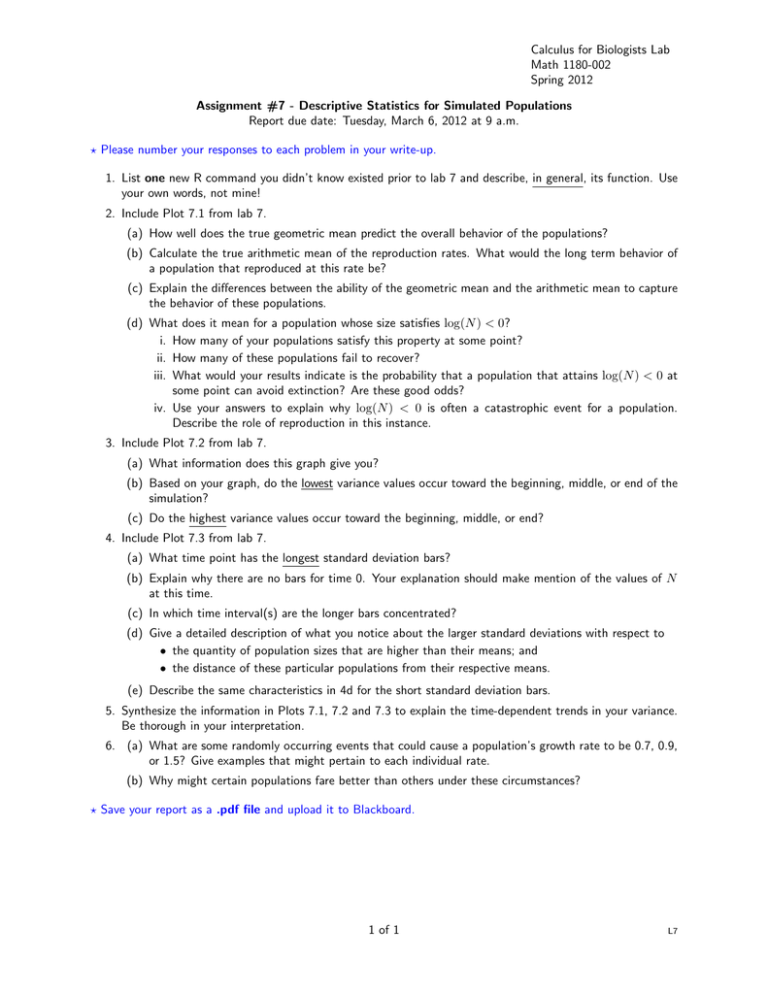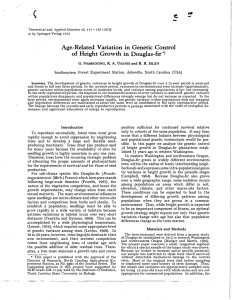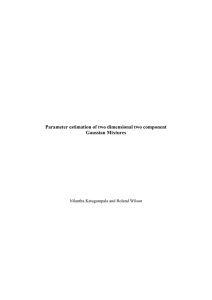Calculus for Biologists Lab Math 1180-002 Spring 2012
advertisement

Calculus for Biologists Lab Math 1180-002 Spring 2012 Assignment #7 - Descriptive Statistics for Simulated Populations Report due date: Tuesday, March 6, 2012 at 9 a.m. ? Please number your responses to each problem in your write-up. 1. List one new R command you didn’t know existed prior to lab 7 and describe, in general, its function. Use your own words, not mine! 2. Include Plot 7.1 from lab 7. (a) How well does the true geometric mean predict the overall behavior of the populations? (b) Calculate the true arithmetic mean of the reproduction rates. What would the long term behavior of a population that reproduced at this rate be? (c) Explain the differences between the ability of the geometric mean and the arithmetic mean to capture the behavior of these populations. (d) What does it mean for a population whose size satisfies log(N ) < 0? i. How many of your populations satisfy this property at some point? ii. How many of these populations fail to recover? iii. What would your results indicate is the probability that a population that attains log(N ) < 0 at some point can avoid extinction? Are these good odds? iv. Use your answers to explain why log(N ) < 0 is often a catastrophic event for a population. Describe the role of reproduction in this instance. 3. Include Plot 7.2 from lab 7. (a) What information does this graph give you? (b) Based on your graph, do the lowest variance values occur toward the beginning, middle, or end of the simulation? (c) Do the highest variance values occur toward the beginning, middle, or end? 4. Include Plot 7.3 from lab 7. (a) What time point has the longest standard deviation bars? (b) Explain why there are no bars for time 0. Your explanation should make mention of the values of N at this time. (c) In which time interval(s) are the longer bars concentrated? (d) Give a detailed description of what you notice about the larger standard deviations with respect to • the quantity of population sizes that are higher than their means; and • the distance of these particular populations from their respective means. (e) Describe the same characteristics in 4d for the short standard deviation bars. 5. Synthesize the information in Plots 7.1, 7.2 and 7.3 to explain the time-dependent trends in your variance. Be thorough in your interpretation. 6. (a) What are some randomly occurring events that could cause a population’s growth rate to be 0.7, 0.9, or 1.5? Give examples that might pertain to each individual rate. (b) Why might certain populations fare better than others under these circumstances? ? Save your report as a .pdf file and upload it to Blackboard. 1 of 1 L7






